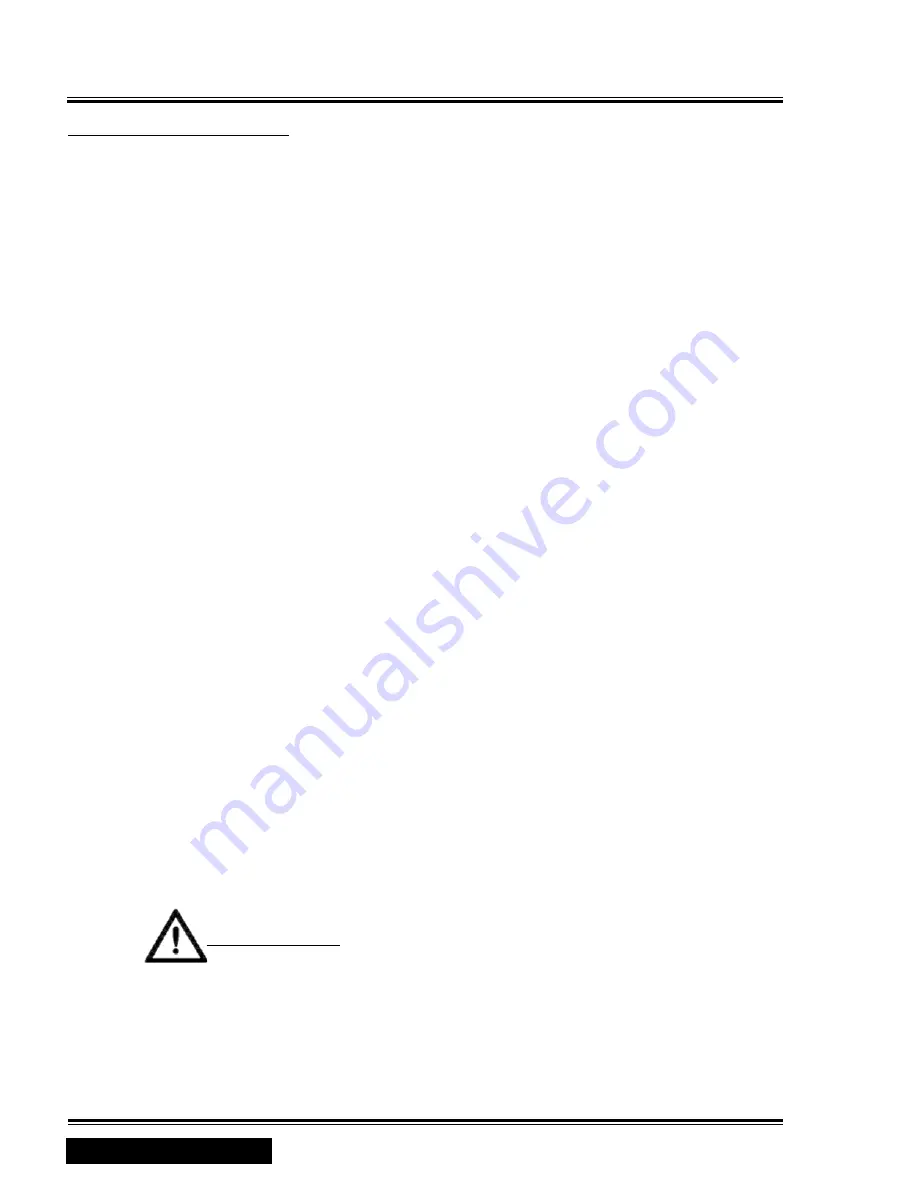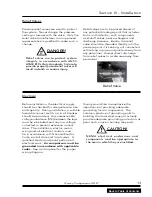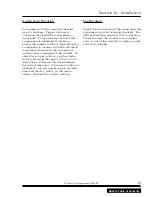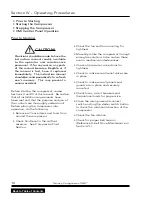
Section II - Description
Capacity Control System
As the motor starts driving the compressor
rotors, air is drawn in, compressed and
discharged into the air/fluid reservoir.
When the air pressure in the air/fluid
reservoir exceeds the set point of the pilot
valve (normally 00 PSIG), the valve opens
and passes a controlled volume of air to
the inlet valve air cylinder.
The air forces a piston to move within
the cylinder, closing the inlet valve. The
compressor will continue to run, matching
air demand with air delivery by constantly
adjusting the position of the inlet valve.
The inlet valve regulates compressor
capacity between 00% and nearly 0% of
rated delivery.
When maximum pressure (typically 0
PSIG above normal full load pressure)
has been obtained in the air system,
complete compressor unloading occurs.
The pressure switch located in the control
panel sends a signal to the control and
the solenoid valve opens, venting the
residual pressure from the blowdown valve.
At the same time, control air from the
reservoir check valve is directed through
the solenoid to the inlet valve air cylinder.
The inlet valve is held in a closed position
preventing the intake of air into the
compressor and serving as a check valve
preventing reverse air/fluid flow through
the inlet valve and air filter.
Electronic Control
QGB
™
compressors are equipped with
an electronic controller which utilizes a
microprocessor to control the compressor.
Refer to Section IV for operational
instructions.
Warning!
Never assume it is safe to work on a
compressor because it is not operating.
It may be in standby mode and could
restart at any time. Follow all safety
instructions in Section V - Maintenance
or Service Preparation.
Auto Dual
With the controller set to run in auto dual
mode, a solid state timer is activated
when the unload pressure is reached. This
timer is adjustable within a ten (0) minute
range. When the timer reaches the end
of its delay period, the compressor will
automatically shut down and assume a
standby mode. Upon a drop in system
air pressure (to the load set point), the
compressor will restart automatically. The
timer should be set during unit start-up to
a minimum of six (6) minutes.
During the unloaded/timing mode, if
plant pressure drops, the compressor will
continue to operate, resetting the timer
and instructing the inlet valve to reopen.
Continuous Run
When set to run in Continuous Run mode,
the compressor operates continuously,
matching air demand as a differential pilot
valve controls the position of the inlet
valve. When maximum system pressure is
reached, the compressor unloads, venting
the air/fluid reservoir and, although the
compressor continues to run unloaded, no
air is compressed.
Load/No Load
In the Load/No Load mode, the
compressor does not modulate the inlet
valve. The valve is either fully open or it is
closed. If system demands include regular
periods of air usage at less than full load,
a large compressed air storage capability
is required with this type of control.
Without adequate storage, rapid cycling
may occur. This will cause wide system
pressure fluctuations that may affect the
performance of equipment using the
compressed air. Load/No Load works with
Auto Dual control to turn the compressor
off during extended periods of no demand.
8
Quincy Compressor-QGB
™
Back to Table of Contents













































